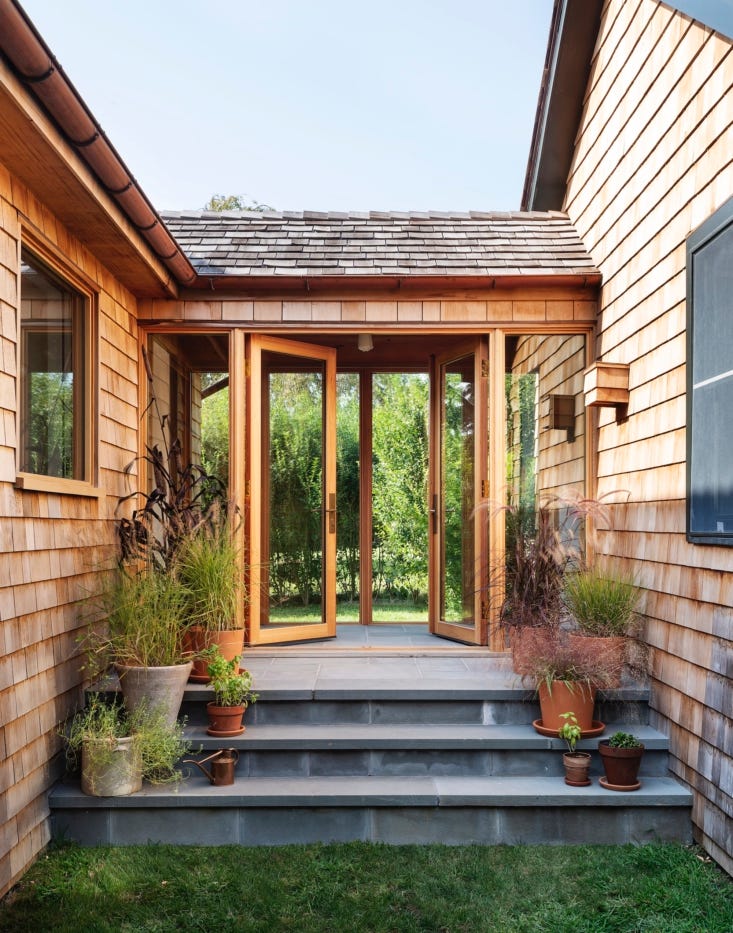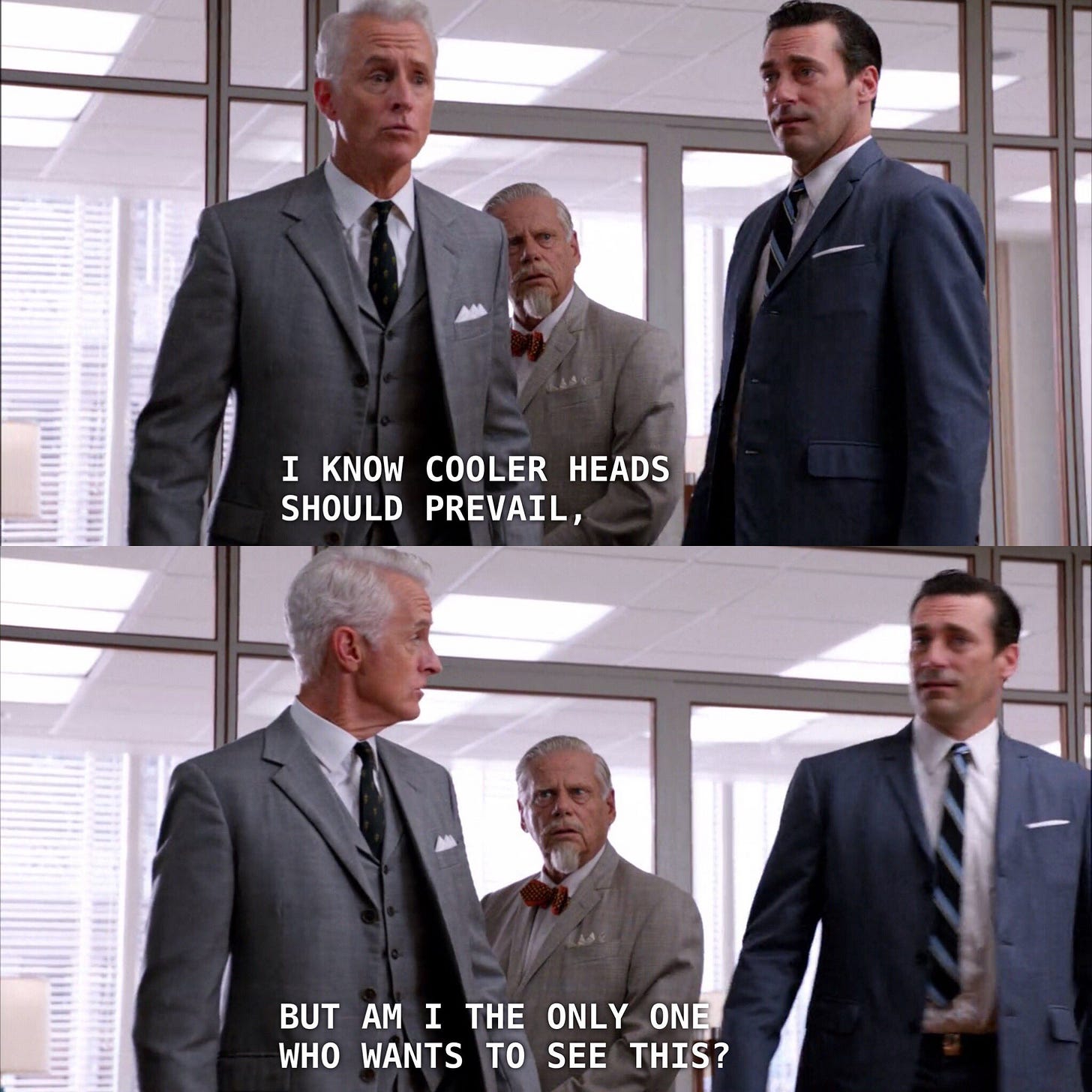With every passing year, autumn arrives a little quicker and I think: “Where did summer go?” So this year, I’m writing myself a list for making the most of it. Ain’t gonna pressure myself to get to all of them, but it helps to have a map. Yes, it’s Chicago-centric, but maybe it’ll spark some ideas for you, too.
Personal instructions for the best summer ever
Eat in the garden as much as possible (pork-belly tacos + key lime pie would be a good start)
Catch a game at the Friendly Confines ✅ (already done)
Weekly cannonball into the lake
Popsicles in a cooler in the front yard on Friday afternoons
Sing “Twist and Shout” on a parade float downtown
Watch 4th of July fireworks from a roof in Logan Square
Four Square tournament at the block party
A two-wheeled jaunt up the North Branch Trail to the Botanic Garden
Annual Box Fort Day (save a bunch of cardboard, use Makedo fasteners to become architects)
Take the train with the kids to Maggie Daley Park
Lakefront cabana crawl
Kayak to Ping Tom Park and visit Chinatown, Jake
Concerts in the park
Rent a boat and take it up the Chicago river
Cap things off with a group bike ride to Promontory Point for a birthday kickback and swim
I’m sensing a water theme here. What’s on your personal list that I can steal?
However: the one thing that I will hang my hat on for this summer to be a success is the completion of one (1) of the big projects that have been dogging us of late — be it bike shed construction, basement clean-out, or redesign of the boy’s bedroom.
Watch this space.
away we go.
The Reenchanted World: On Finding Mystery in the Digital Age
By Karl Ove Knausgaard for Harper’s
Best line: To understand a man, you have to know what was happening in the world when he was twenty, Napoleon is supposed to have said. The quotation is probably apocryphal, but that doesn’t mean it’s not true. For me, it is this world by the river that counts. When I sit down to write a novel, the natural time for it to take place in is the Eighties, as though that era embodied the world’s true form, its essence, and everything that came later were a kind of deviation. Even though I google various topics as I’m writing, the characters in the novel don’t google anything; it never occurs to them. The same is true when I dream. Cell phones and the internet never appear in my dreams, which are populated mostly by the people I was surrounded by forty years ago.
Hong Kong’s Bamboo Scaffolding Hangs On (For Now) by Tiffany May for The New York Times (gift link)
Best line: Kenny Lee is a master scaffold worker who has for decades built open-air bamboo theaters for religious celebrations and Cantonese opera performances. “You can’t really make money,” he says. “I do it for the gods, then for the brothers.”
"The tone in architecture is that the public is ignorant" says Thomas Heatherwick by Ben Dreith for Dezeen
Best line: "We talk about how the world of architecture is science and art, and actually, I believe we're neither being scientific enough nor artistic enough," he said. "And I think there are people who are very scared about measuring how our brains respond, and I think that's wrong."
Art Is How We Remember What Power Wants Us to Forget by Paola Mendoza for The Nation
Best line: In 2019, I spoke to a group of asylum-seeking women who told me of the months they spent trapped in a detention center in southern Texas after trying to seek asylum at the US-Mexico border. They were denied showers for weeks on end, forced to bleed through their clothes during their periods, and were given rotting food to eat. These women endured conditions meant to break them. But instead of staying silent, they organized a llanto de libertad—a cry for freedom.
home tour
A Low-Key but Subtly Luxe Beach House on Shelter Island
By Julie Carlson for Remodelista
Best line: A few years ago, when Nick came across a house with an interesting pedigree on Shelter Island, he leapt at the chance to own a sliver of history. Built in the 1940s, the modest shingled home was at one time owned by Giorgio DeLuca, the cofounder of legendary NYC food emporium Dean & DeLuca. After a time, DeLuca sold the house to Melvin Dwork, a celebrated Parsons-trained New York designer and LGBT activist.
“The original structure had pine-paneled cathedral ceilings and a floor of lagoon-green ceramic tile,” Gavin says. “I loved it, but I knew we were going to need to update (and add on to) the house, so I cold-called Workstead, a firm I have long admired.”
ephemera
My thoughts on yesterday’s excitement:
Seth Putnam is an editor and writer in Chicago. He lives with his wife, son, and daughter in a 1920s home that is the epitome of a work in progress.
"Instructions for living a life: Pay attention. Be astonished. Tell about it." —Mary Oliver






